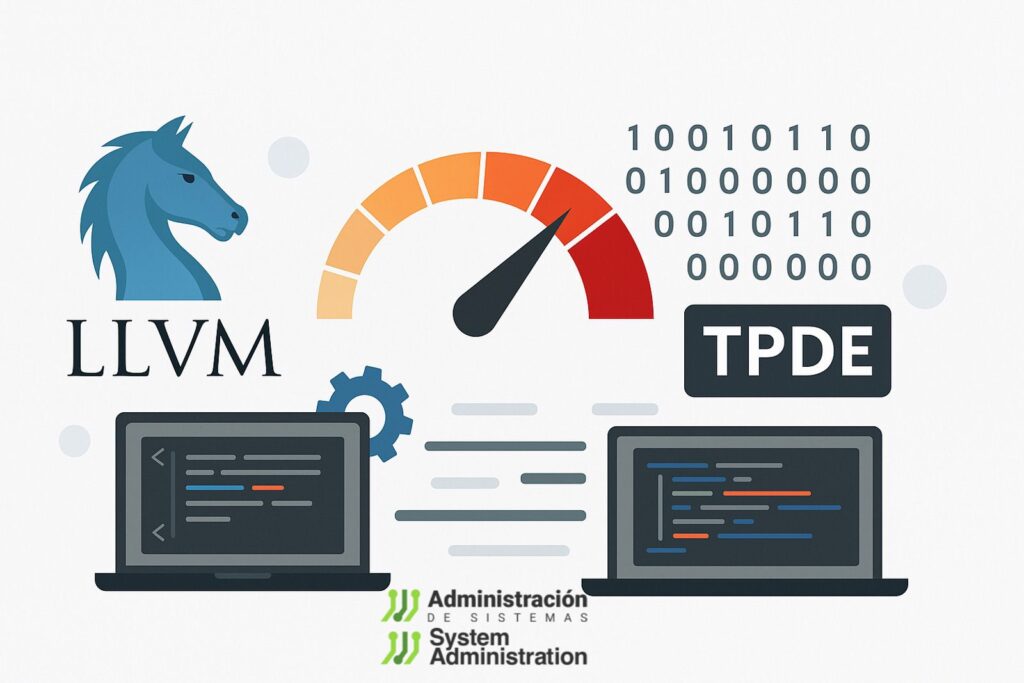Developed at the Technical University of Munich, TPDE is a new backend framework that could redefine how compilers are built and optimized—offering blazing performance for JIT workloads and low-latency environments.
For years, LLVM has reigned as the dominant force in compiler infrastructure. Powering languages such as C, C++, Rust, Swift, and Julia, LLVM’s backend has become the industry standard. But now, a new open-source challenger has emerged: TPDE—a lean, high-performance compiler backend that’s shaking up the status quo.
What Is TPDE?
TPDE is a modular compiler backend developed by researchers at the Technical University of Munich. It was built with a singular mission: to deliver extremely fast machine code generation, especially in just-in-time (JIT) compilation contexts like WebAssembly runtimes, embedded scripting engines, and modern database systems.
Unlike LLVM, which breaks down compilation into several stages—like instruction selection, register allocation, and instruction encoding—TPDE compresses everything into a single pass, drastically reducing compile times.
Up to 24x Faster than LLVM
In their technical paper, the authors report that TPDE can compile LLVM Intermediate Representation (LLVM-IR) between 8x and 24x faster than LLVM’s -O0 optimization level. Impressively, this is achieved without major performance trade-offs: the runtime performance of the generated code remains within a ±9% margin compared to LLVM.
The project is built with fewer than 8,000 lines of code and currently supports x86-64 and ARM64 (AArch64)—two of the most widely used CPU architectures today.
This makes TPDE especially relevant in low-latency compute environments such as:
- High-frequency trading platforms
- Real-time analytics in edge computing
- WebAssembly runtimes in browsers or serverless functions
- In-database execution engines like DuckDB
A Lean Architecture for Speed
TPDE uses an adapter-based system to interface with SSA-form IRs, allowing it to bypass costly intermediate translations. By leveraging a unified backend flow, the compiler can skip unnecessary abstraction layers and deliver results much faster than traditional methods.
The generated instructions are largely derived from LLVM’s Machine IR, which ensures some level of compatibility and makes porting across architectures easier in the future.
The backend has already been demonstrated in LLVM pipelines, showcasing its modularity and adaptability.
Deployment and Integration
TPDE is available as an open-source project. It currently supports:
- LLVM-IR backends
- WebAssembly workflows
- ARM and x86 server environments
- JIT-heavy environments needing ultra-low latency
You can find the full source code on the TPDE GitHub repository and explore the technical paper detailing its implementation and benchmarks.
Should LLVM Be Worried?
LLVM isn’t going anywhere anytime soon. It has decades of optimization, a vast community, and a thriving ecosystem supporting a wide array of tools and languages. But TPDE presents a compelling case for specialized workloads, where fast compilation outweighs high-level optimization complexity.
For cloud-native developers working on microservices, AI inference engines, or custom database compilers, TPDE offers a lightweight alternative that can significantly reduce startup time and latency.
A Paradigm Shift for Compiler Engineering?
As demand for real-time AI, edge computing, and JIT-based services grows, developers are rethinking traditional compiler models. TPDE arrives at a pivotal moment, championing low-latency compile times as a first-class concern.
If its development continues to progress, TPDE could become a foundational piece in next-gen compiler stacks, empowering faster iteration cycles, smoother serverless deployments, and greater control for systems engineers and DevOps teams alike.

